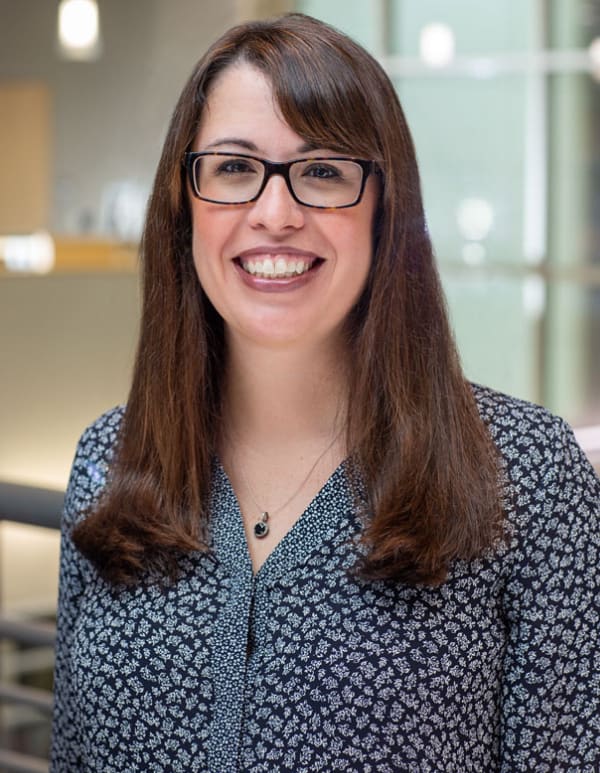
Shannon Boye, PhD, is the founder and chief scientific officer (CSO) of Atsena Therapeutics, as well as a professor and chief of the Division of Cellular and Molecular Therapy in the University of Florida’s Department of Pediatrics.
Ophthalmology Management: Can you discuss your role as CSO?
Shannon Boye, PhD: As Atsena’s CSO, I’m leveraging my 20-plus years of experience in the ocular gene therapy field. I lead our nonclinical team through successful completion of investigational new drug-enabling studies that establish safety and efficacy of our gene therapies prior to clinical application. I also liaise with our chemistry, manufacturing, and controls team and clinical team to ensure we have the right assays in place to measure long-term potency of our products and any potential reaction to the drug product in patients, respectively. I have enjoyed the outward-facing aspects of my role. As CSO, I have the opportunity to present Atsena’s newest results and to share our groundbreaking science with investors and industry leaders. This has been the most exciting chapter in my professional career thus far.
OM: What are the latest developments with ATSN-101 for the treatment of Leber congenital amaurosis caused by biallelic mutations in GUCY2D (LCA1)?
SB: Atsena recently entered into an exclusive license agreement with Nippon
Shinyaku Co. Ltd. for the commercialization of ATSN-101 in the US and for the development and commercialization of ATSN-101 in Japan. Together, our teams are actively advancing this gene therapy into a pivotal trial that we hope will result in approval and a solution for patients and families affected by LCA1.
OM: Atsena was granted RMAT status for ATSN-201 gene therapy to treat X-linked retinoschisis (XLRS). Tell us more.
SB: Regenerative medicine advanced therapy (RMAT) designation is granted to medicines intended to treat a serious condition for which preliminary clinical efficacy has been demonstrated. XLRS and our ATSN-201 therapy satisfied those criteria. RMAT provides us with more intensive FDA guidance on our path forward and expedites the development process for ATSN-201. We have had very productive interactions with the agency, and with their help, look forward to getting this therapy to patients as quickly as possible.
OM: What are the trends in the ocular gene therapy space?
SB: I’ve noticed 2 big emerging trends that apply to the gene therapy field. First, it’s no longer sufficient to just show safety in your early trials. For investors to get excited, you need to have compelling evidence that your medicine is going to make a real difference in patients’ lives. Second, gene therapy uptake is going to be limited in indications where there is a current standard of care. For those 2 reasons and more, I feel very lucky to work at Atsena because we’re showing clear signs of efficacy for both ATSN-101 and ATSN-201, and these patients have no alternative treatment options. We have a commercially viable approach that will hopefully have a positive impact on many more patients’ lives.
OM: What are the benefits of novel Adeno-associated virus (AAV) technology?
SB: Atsena is leveraging 2 novel AAV technologies to develop effective treatments for patients suffering from low vision or blindness. First, our AAV.SPR capsid is capable of laterally spreading well beyond the margins of the subretinal injection bleb. This means that we can safely place our therapeutic vector in the peripheral subretinal space, and, by virtue of its spreading behavior, achieve therapeutic gene delivery to the central retina, where it is needed to improve vision. This is a big advantage over conventional AAV vectors, which require direct submacular injection in order to treat the central retina.
Our second novel technology is our proprietary dual AAV vector platform. This addresses 1 shortcoming of AAV: its relatively small packaging capacity—some genes are just too big to fit inside a standard AAV. With our dual vector technology, we can split a large gene in half and deliver each half via a separate AAV capsid. Once both capsids enter the cell, those 2 gene halves find each other via a recombinogenic sequence shared between the front- and back-half sequences, and recombine to form the full-length gene. This opens the door to treating indications associated with mutations in large genes that weren’t addressable with conventional single AAV vectors. OM








